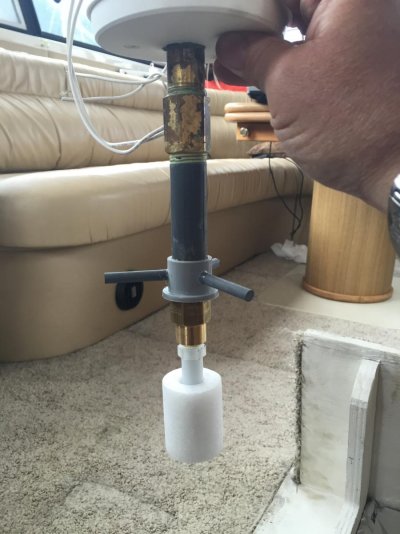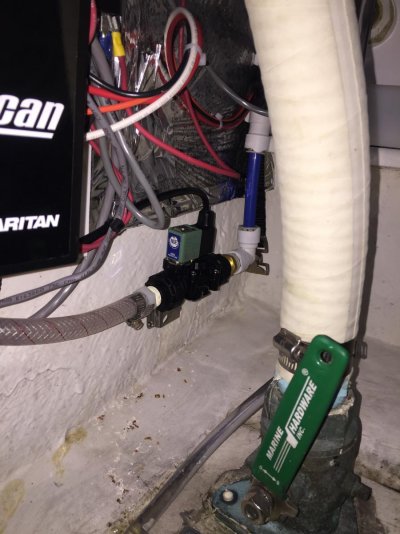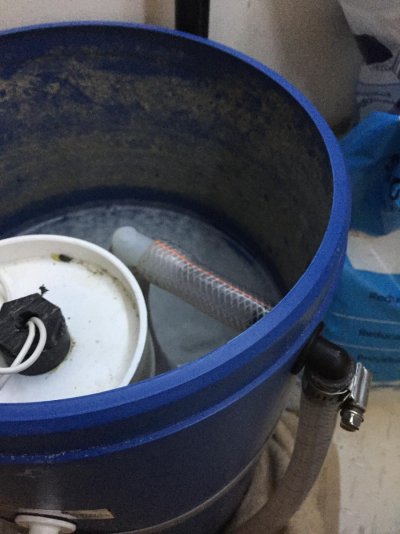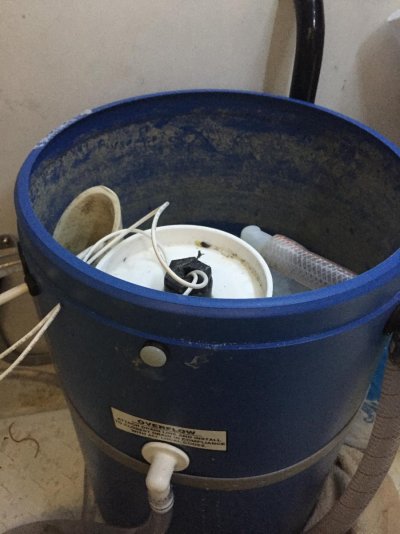ksanders
Moderator Emeritus
We have a Raritan electroscan with salt feed.
I was wondering if anybody else has had issues of overfilling using their salt feed system??? The symptom of this problem is that we are using MUCH more salt than would be rational based on the usage of the electroscan.
I have worked extensivly with the factory support team at Raritan whom are great BTW, but there has been no resolution. The reason for this is not because of any problem with the Raritan equipment, per se, it is a problem with how their equipment integrates into my boats potable water system.
So... Here's the results of my research into this frustrating issue.
The Raritan salt feed system keeps a level of water in a container similar to a 5 gallon bucket. In that bucket goes the Solar Salt. The electroscan when it has a low amperage condition powers a small pump which moves the concentrated salt water into the electroscan facilitating waste treatment.
The problem is that occasionally the float valve in the salt feed tank sticks causing the salt tank to overflow into the bilge via its overflow hose. Replacing the float valve did not help.
I isolated the problem to the fact that Raritan uses a Hudson Valve Co compact float valve.

The challenge is that this float valve relies on water pressure to keep it closed. Even if the water level is at the target level the valve will open if the water pressure drops dramatically. A good example of this pressure drop is if two high usage faucets are used on the boat at the same time.
My first step was to replace my water pump with a higher flow unit. The largest 12V pump i could find was a 60 psi 6 GPM pump. That did great for my water pressure but did not solve the overflow and salt usage problem.
So, my next step is to replace the float valve. After doing allot of searching and pondering I decided to just use a float switch and solenoid valve. This is in part due to the compact nature of the float valve needed. I am certain this will solve the original problem.
So, has anybody else experienced what they feel is excessive salt usage out of their Raritan salt feed system? If so, possibly this can help you as well.
I was wondering if anybody else has had issues of overfilling using their salt feed system??? The symptom of this problem is that we are using MUCH more salt than would be rational based on the usage of the electroscan.
I have worked extensivly with the factory support team at Raritan whom are great BTW, but there has been no resolution. The reason for this is not because of any problem with the Raritan equipment, per se, it is a problem with how their equipment integrates into my boats potable water system.
So... Here's the results of my research into this frustrating issue.
The Raritan salt feed system keeps a level of water in a container similar to a 5 gallon bucket. In that bucket goes the Solar Salt. The electroscan when it has a low amperage condition powers a small pump which moves the concentrated salt water into the electroscan facilitating waste treatment.
The problem is that occasionally the float valve in the salt feed tank sticks causing the salt tank to overflow into the bilge via its overflow hose. Replacing the float valve did not help.
I isolated the problem to the fact that Raritan uses a Hudson Valve Co compact float valve.

The challenge is that this float valve relies on water pressure to keep it closed. Even if the water level is at the target level the valve will open if the water pressure drops dramatically. A good example of this pressure drop is if two high usage faucets are used on the boat at the same time.
My first step was to replace my water pump with a higher flow unit. The largest 12V pump i could find was a 60 psi 6 GPM pump. That did great for my water pressure but did not solve the overflow and salt usage problem.
So, my next step is to replace the float valve. After doing allot of searching and pondering I decided to just use a float switch and solenoid valve. This is in part due to the compact nature of the float valve needed. I am certain this will solve the original problem.
So, has anybody else experienced what they feel is excessive salt usage out of their Raritan salt feed system? If so, possibly this can help you as well.





